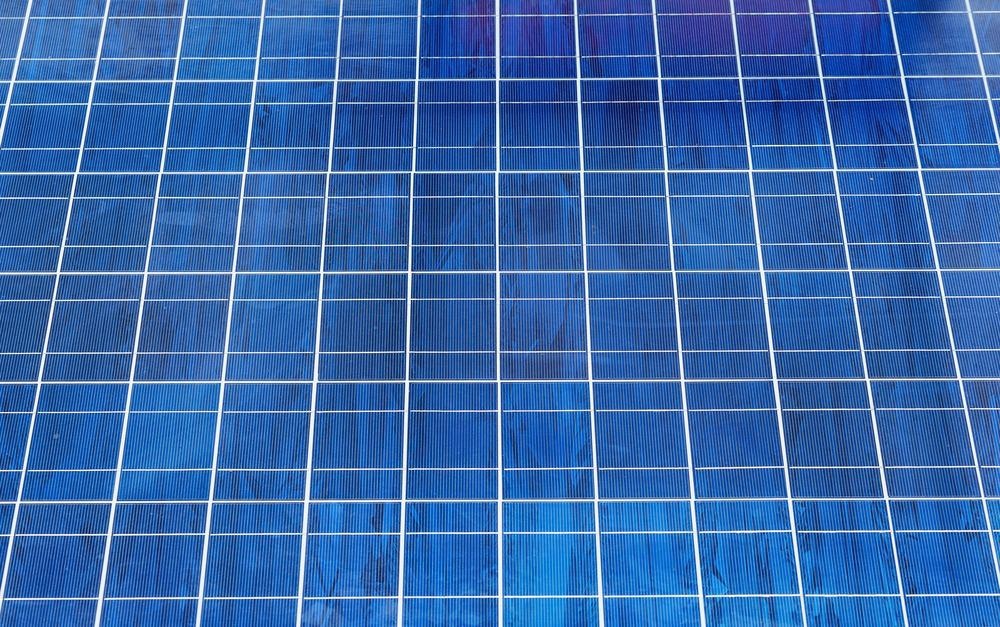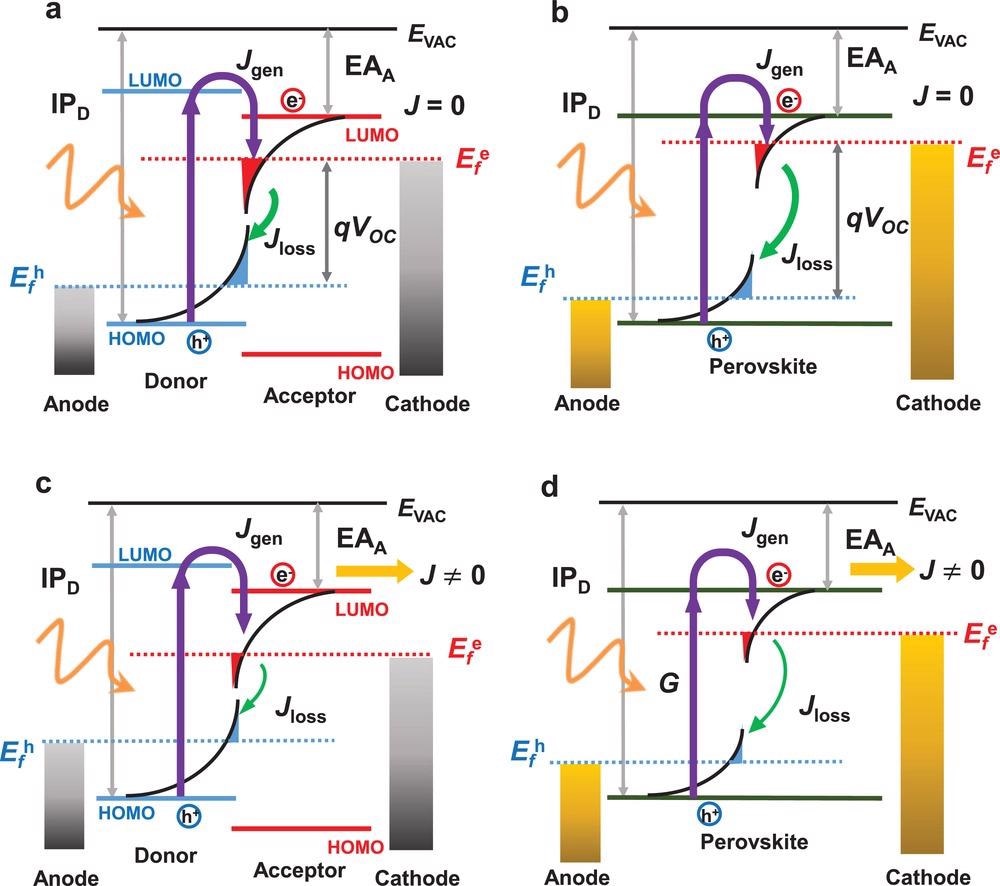Thin-film photovoltaic devices are becoming more widespread in numerous commercial and industrial applications, with much research into their mechanical and electrical properties in recent years. A paper published online in Advanced Materials has investigated and compared properties of organic and perovskite photovoltaic devices including their charge dynamics to highlight key factors limiting their performance and provide pertinent information that will inform their design.

Study: A Comparison of Charge Carrier Dynamics in Organic and Perovskite Solar Cells. Image Credit: Jozef Klopacka/Shutterstock.com
Solution-Processable Semiconductors and Photovoltaic Devices
In the renewable energy generation and storage fields, researchers are constantly exploring innovative technologies and advanced materials that will provide superior performance for new generations of devices. Quick progress has been made in the development of solar photovoltaic cells to harvest the limitless energy of our sun to provide energy for the growing world population.
Recently, solution-processable semiconductors have been explored for their potential to manufacture low-cost, lightweight, flexible photovoltaic devices which can be integrated into many next-generation products. The manufacture of these semiconductors is scalable, and they can be used in wearable sensors, medical devices, flexible energy harvesting systems, and more.
Organic Semiconductors and Perovskites
The development of organic semiconductors and organic-inorganic hybrid perovskites has shown progress recently, leading to improvements in stability and performance. This has made them attractive targets for energy harvesting and storage devices.
Organic solar cells have shown power conversion efficiencies exceeding 18%. This is due to advances in the design of device architecture, thin-film morphology, and photoactive materials. Norfullerene electron acceptors have enhanced device performance, providing superior ranges of light absorption, enhanced environmental stability, and lower levels of voltage loss.
These properties are significantly better than fullerene-based electron acceptors, which are conventionally used.
Hybrid inorganic-organic metal halide perovskite solar cells have displayed power conversion efficiencies exceeding 25%. This makes them better than conventional silicon-based devices and is mainly due to optimized material processing and compositional tuning.
Additionally, advances in charge transport layers have been achieved. Advances in the stability of hybrid perovskite solar cells have complimented the advances in their efficiency, leading to widespread testing in numerous photovoltaic devices and studies of various device architectures.
Comparing the Properties of Organic and Hybrid Perovskite Solar Cells
The study in Advanced Materials has sought to compare the charge dynamics and other properties of organic and hybrid metal halide perovskite solar cells to explore their limitations and inform their design.
The research focused on solar cells with p-i-n planar architectures for simplicity. These are commonly used architectures in both technologies. Similarities exist in device characteristics, fabrication methods, and architecture. This facilitates direct comparisons between these two solution-processed semiconductor types.
In organic solar cells, previous theoretical predictions on device efficiency have been exceeded by advances in nonfullerite electron acceptors. This has raised significant questions on their limitations, leading to new avenues of materials research.

A simplified schematic of the balance between charge carrier photogeneration (illustrated as Jgen) and charge recombination (illustrated as a recombination loss current Jloss) and external current (J) under light illumination in OSCS (left) and PSCs (right). a) Open-circuit condition (J = 0) for an OSC, with the contact potential difference (VOC) assumed to track the quasi-Fermi level splitting (QFLS) in the bulk (i.e., neglecting QFLS losses at the device contacts). The figure includes band-edge tail states (shallow trap states) extending into the effective bandgap, with shading indicating filled tail states. b) Open-circuit condition for an equivalent PSC. c,d) Illustrations under charge extraction (e.g., at the maximum power point (MPP)) for an OSC (c) and for a PSC (d). Image Credit: Wu, J et al., Advanced Materials
Hybrid organic-inorganic perovskite cells are a newer technology, with rapid advances in understanding their efficiency leading to considerable progress in device design. However, the underlying fundamental processes that affect device design are still poorly understood and information on these is still emerging.
Knowledge of both device’s charge carrier dynamics and photophysics is central to the device and material design as this informs how efficiently light energy is converted into electrical charge.
Both classes of devices have key similarities and differences. Device architectures and charge extraction layers and metal contacts are similar, whereas the light-absorbing layers have differences in their intrinsic properties.
For example, photoinduced charge generation processes are different, along with differences in charge transport processes. These differences affect device function and performance, but knowledge and device models developed for one type can be applied to the other.
The study focuses on several areas which will inform future development of organic and hybrid organic-inorganic perovskite solar cells. The research explores the similarities and differences between materials, device architecture, and operating principles. Secondly, it discusses charge generation and separation in both technologies, with lessons from photoluminescence and transient absorption studies discussed to help inform this.
Additionally, charge transport, trapping, and recombination were discussed by the research. Charge trapping was found to be a key limitation for both devices. Furthermore, competition between charge extraction and bimolecular recombination was explored. Lessons from transient optoelectronic analyses were also discussed. Finally, materials and device design guidelines were summarized.
The Future
The results of the study published in Advanced Materials will help to inform the future development and design of organic and hybrid organic-inorganic metal halide perovskite photovoltaic solar cells.
Although the scalability and manufacturing challenges for these classes of solar cells were not covered by the perspectives of the study, the information elucidated on the similarities and differences between charge carrier dynamics and photophysics should provide useful insights for future technological developments.
Further Reading
Wu, J et al. (2021) A Comparison of Charge Carrier Dynamics in Organic and Perovskite Solar Cells [online] Advanced Materials 2101833| onlinelibrary.wiley.com. Available at:
Disclaimer: The views expressed here are those of the author expressed in their private capacity and do not necessarily represent the views of AZoM.com Limited T/A AZoNetwork the owner and operator of this website. This disclaimer forms part of the Terms and conditions of use of this website.